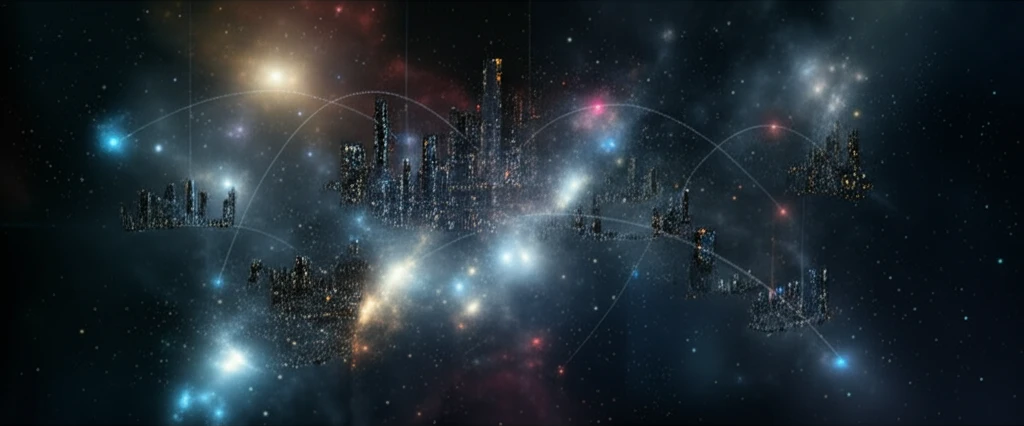
Unveiling the Universe's Hidden Cities: How Galaxy Cluster Mapping is Changing Cosmology
"Explore how astronomers are mapping galaxy clusters using photometric redshifts to unlock the secrets of the Universe and refine our understanding of its vast structure."
Imagine the Universe as a sprawling metropolis, with galaxies forming bustling cities and clusters of galaxies acting as major metropolises. Understanding the distribution and properties of these 'galactic cities' is crucial for unraveling the mysteries of the cosmos, from the nature of dark matter to the expansion rate of the Universe.
For years, astronomers have been developing methods to locate these galactic clusters, often hidden in the vast expanse of the night sky. One particularly promising technique involves using photometric redshifts—estimates of a galaxy's distance based on its color—to map these clusters across large areas of the sky. This approach allows scientists to efficiently survey vast cosmic territories and catalog these significant cosmic structures.
A recent study published in Astronomy & Astrophysics details how this method was applied to the Canada France Hawaii Telescope Legacy Survey (CFHTLS) Wide fields, significantly expanding the catalog of known galaxy cluster candidates. By identifying these clusters and analyzing their properties, researchers are refining our understanding of the Universe's fundamental parameters.
The Power of Photometric Redshifts in Galaxy Cluster Searches

Traditional methods of measuring galaxy distances, such as spectroscopic redshifts, are accurate but time-consuming. To efficiently survey large areas, astronomers use photometric redshifts, which estimate distances based on a galaxy's color. By analyzing the light in different filters, scientists can infer the redshift and thus the distance of these galaxies, enabling the creation of three-dimensional maps of the cosmos.
- Adaptive Kernel Technique: This technique helps create galaxy density maps, highlighting structures.
- SExtractor Software: Used to identify structures in the density maps at different significance levels.
- Minimal Spanning Tree Algorithm: Used to analyze substructures within the identified clusters.
Implications and Future Directions
This extensive catalog of galaxy cluster candidates provides valuable insights into the large-scale structure of the Universe. By studying the distribution, mass, and redshift of these clusters, scientists can refine cosmological parameters, such as the density of dark matter and the equation of state of dark energy. The detected clusters behave as expected if located at intersections of filaments, supporting current structure formation theories. Future research will focus on characterizing these clusters in greater detail, confirming their nature through multi-wavelength observations, and using them to further constrain our cosmological models.
